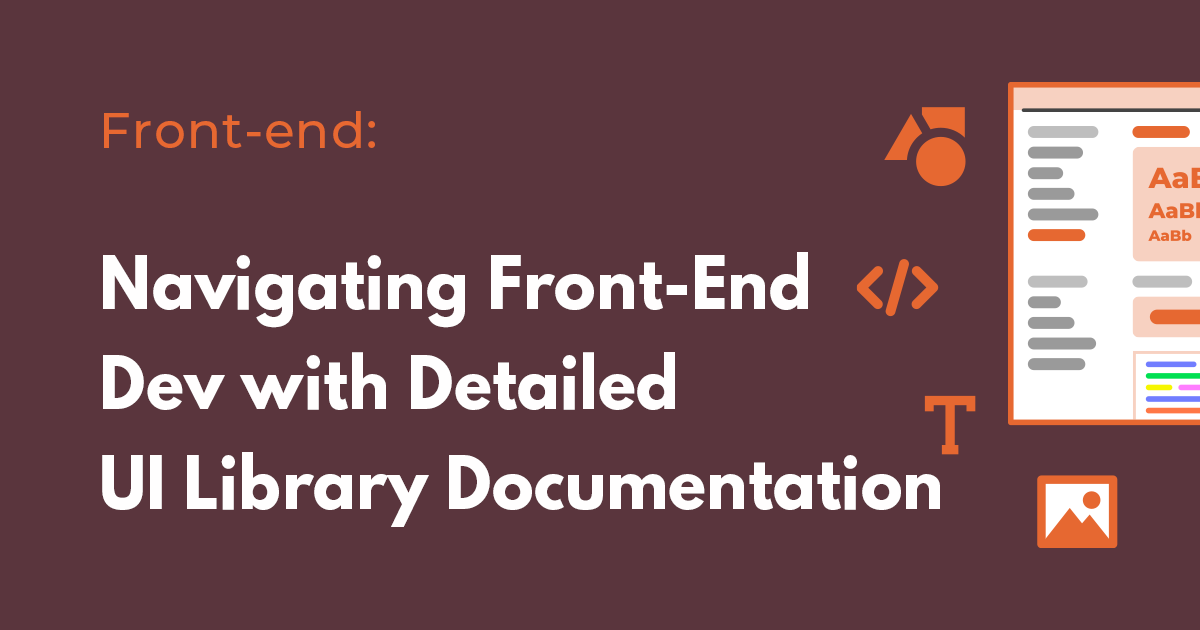Web development requires a nuanced balance of languages, each serving a unique function. HTML anchors the basic layout, CSS ensures sleek aesthetics, and JavaScript brings dynamic interactivity. To optimize this harmonious interplay, front-end frameworks have emerged as pivotal tools. This article spotlights the premier front-end frameworks of 2023 that are revolutionizing the way developers construct digital experiences.
Front-end frameworks are like a finely curated toolbox for developers. They contain reusable code modules, standardize front-end technologies, and offer pre-built interface components. These features drastically reduce the necessity of crafting each function or object from scratch. Equipped with an array of development tools - from layout grids to predefined font settings to standardized UI elements like panels, buttons, navigation bars - front-end frameworks ensure a more streamlined, efficient development process.
In the vast universe of web development, numerous front-end frameworks exist, the majority built on JavaScript. Developers endlessly debate the merits of their preferred frameworks, so understanding their unique characteristics and benefits is crucial to finding the one that aligns with your project's needs. Below, we present a detailed analysis of the most effective, renowned, and user-friendly front-end frameworks as of 2023.
Why Frameworks?
Reviewing most web applications, you'll notice recurring features and sections: user authentication, database connections, profile viewing, stylized information feeds, and more. Instead of writing the underlying logic for these elements each time, front-end frameworks handle these repetitive tasks efficiently.
Since many web applications share similar - or identical - structures, front-end frameworks offer a shared structure, eliminating the need to start from zero. This facilitates code reuse, streamlines work, and accelerates the development process. In short, there's no need to reinvent the wheel.
Equally important, developers aim to create code that is easily readable and comprehensible to other developers. A code is read exponentially more times than it is written. Hence, clarity and simplicity are paramount. Developers must provide an easily navigable map to the logic behind their tasks, enabling others to utilize their code effectively.
Front-end frameworks help developers organize their website applications, allowing them to add features effortlessly. They expedite the initiation of development projects and refocus developers' attention from configuration minutiae to the big-picture feature set. By establishing conventions for writing and structuring code, frameworks bring uniformity and predictability to the development process.
Delineating Front-end and Back-end Frameworks
Frameworks are the bread and butter of web development and can be divided broadly into two types: Front-end and Back-end frameworks.
Front-end frameworks deal with the parts of website applications that users see and interact with. They comprise web design and interaction tools, with HTML, CSS, and JavaScript languages typically being employed in their creation. They're all about crafting and organizing the interactivity, functionality, and overall user experience.
Back-end frameworks, however, operate behind the scenes. They're the unseen force that includes the server, the database, and the code that communicates with them. While you can't see the back-end when you visit a website on your browser, it is the engine that feeds dynamic data to the front-end for you to view and interact with. Back-end code can be written in a variety of programming languages, such as Python, Ruby, Node JavaScript, and many more.
Diving into the Best Front-end Frameworks of 2023
Technology continually evolves, leading to the birth of several cutting-edge front-end frameworks. Each brings a unique set of features to the table, making the choice tough for developers. Given that every business has its unique needs and objectives, the development of its website and applications must align with these aspirations.
Identifying the absolute best front-end framework on the market is a topic of constant debate. However, recent studies and surveys have highlighted the most popular contenders. Currently, the leading front-end frameworks include React, Vue, Angular, Svelte, JQuery, Ember, Backbone, Semantic UI, Foundation, and Preact. In the following sections, we will delve into each of these frameworks, exploring their features and limitations to assist you in choosing the one that best suits your project requirements.
React: A Deeper Dive into the High-Performing, User-Friendly Front-end Framework
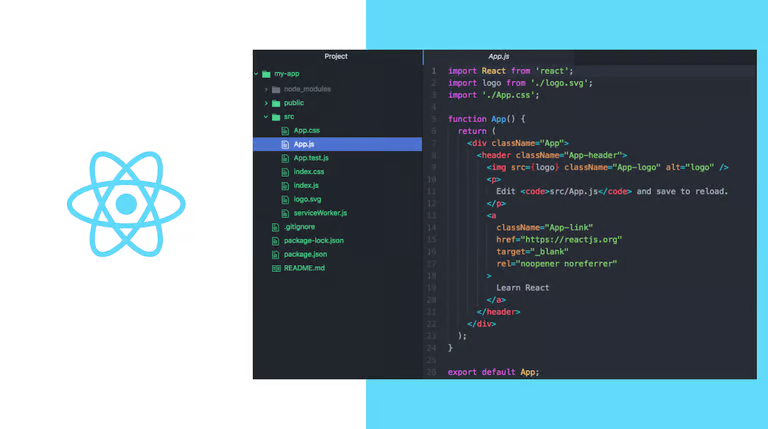
React holds a prominent spot in the world of front-end frameworks. Originally developed by Facebook in 2011, React is a JavaScript library based on components, featuring JSX syntax. React broke free from the traditional definition of front-end frameworks when it went open-source in 2013, becoming widely embraced by developers worldwide.
The framework's popularity is indisputable, boasting over 3 million active users and a vibrant supporting community. Approximately 80 percent of seasoned developers report a positive and seamless experience with React in their projects. Moreover, more than 1.5 million web applications owe their existence to React. Among the real-world projects built with React are powerhouses like Facebook, Netflix, Vivaldi Browser, Khan Academy, BBC, Airbnb, Pinterest, Asana, Reddit, and UberEats.
One of React's key attractions is the virtual Document Object Model (DOM) with one-way data binding. This feature lends React superior performance and places it among the most straightforward frameworks to learn, especially for novices or less experienced developers. Its user-friendly nature and gentle learning curve make React an excellent starting point.
While React is a versatile library, it lacks some of the inherent features other front-end frameworks possess. Thus, it's designed to work synergistically with other libraries for tasks like state management, routing, and interaction with APIs. React's components are reusable, making it an efficient choice for time-saving, interactive interface development.
Advantages
Fast updates Backed by Facebook Virtual DOM for rapid operation in the document Compatibility with numerous JS libraries Component writing without classes Reusable code components Beginner-friendly Easy migration between versions
Limitations
Complex JSX syntax learning curve Documentation could be more comprehensive
Application
Thanks to its virtual DOM capability, React is one of the leading front-end frameworks for complex web development projects featuring numerous dynamic blocks (navigation panels, accordion sections, buttons, etc.). It excels when managing elements with binary states, such as active/inactive, expanded/collapsed, active/disabled, etc. Enhancing React's efficiency is achievable by integrating it with other libraries like Redux.
However, React might not be the ideal choice for developers who aren't well-versed in pure JavaScript. The JSX syntax can pose an initial hurdle for those who prefer not to invest time learning it."
Vue.js: A Snapshot of the Compact, Beginner-friendly Front-end Framework
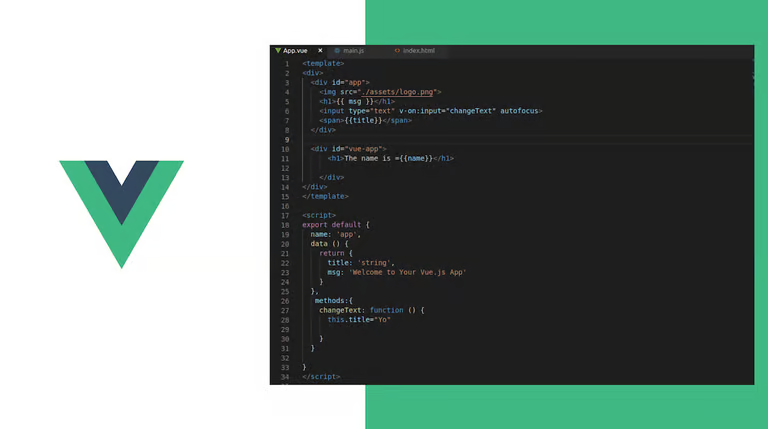
In the world of front-end frameworks, Vue.js has made a substantial mark, with 40 percent of developers acknowledging they've used Vue.js in their projects at least once. This framework is responsible for the creation of over 700,000 web applications, including those of notable brands such as Alibaba, Reuters, 9gag, Xiaomi, and Ride Receipts.
Vue.js came into existence in 2014, created by Evan You, who also played a significant role in the development of another well-known JS front-end framework, Angular. Unlike some of its counterparts, Vue.js isn't backed by any large corporations.
Among the standout features of Vue are its rapid performance, attributable to the virtual DOM, component-based architecture, and two-way binding. These attributes ensure swift updating of related components and effective tracking of data changes – a crucial requirement for applications needing real-time updates. Furthermore, developers can appreciate Vue's compact size, as its compressed file is a mere 18 kilobytes.
Boasting well-detailed documentation and an active community, Vue is considered more accessible and beginner-friendly compared to Angular and several other front-end frameworks. It provides numerous tools for developers, including plugin installation systems, browser debugging tools, state managers, end-to-end testing tools, server renderer, among others.
Advantages
Fast and compact Detailed documentation Beginner-friendly Two-way data binding Uncomplicated syntax SEO-friendly
Limitations
Limited plugin availability Relatively new and developed by individuals Limited suitability for large projects Lack of corporate backing
Application
Vue stands as a solid choice among front-end frameworks for building single-page applications from the ground up or launching smaller web development projects. It can easily integrate with server pages and assist developers with a variety of features such as tree-shaking, bundling, code-splitting, and much more.
Angular: A Comprehensive Overview of the Feature-rich Front-end Framework
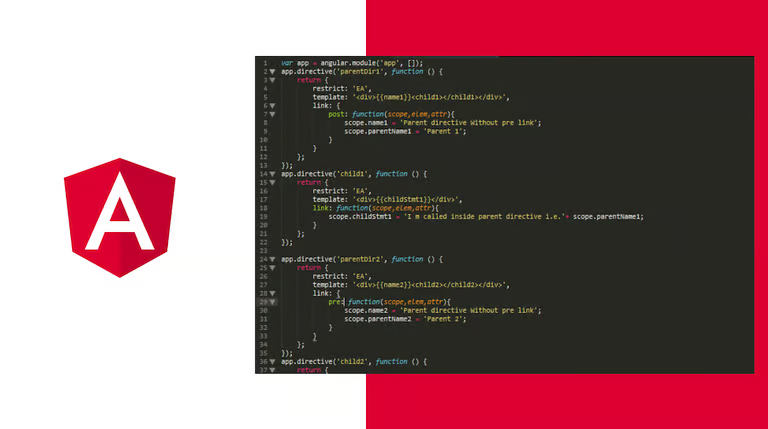
Prominently placed among today's most popular software development tools, Angular, also known as Angular 2+, is a contemporary, open-source front-end framework that operates on TypeScript. To date, over 600,000 websites have been built using Angular or its predecessor, AngularJS, including a majority of Google's services.
Angular excels in the development of web and mobile applications, proving particularly adept in creating single and multi-page web applications. It's no wonder renowned brands like Forbes, LEGO, UPS, BMW, and Autodesk have chosen Angular for their web development needs.
Google first introduced Angular to the JavaScript ecosystem in 2009, and its popularity among developers has steadily grown since. The current version, Angular 2+, launched in 2016, with approximately 60 percent of web developers reporting experience with the Angular framework. Half of these developers assert that Angular has effectively met their needs.
Angular 2+ is essentially a robust version of AngularJS, providing enhanced performance and a myriad of useful features. A distinguishing characteristic of Angular vis-a-vis React is Angular's two-way data binding, ensuring real-time synchronization between the model and the view. This means any modifications in the view reflect in the model and vice versa.
The Directives feature in Angular enables developers to dictate specific behaviors of the DOM and create vibrant, dynamic HTML content. Angular also includes a Hierarchical Dependency Injection feature, which allows developers to define code dependencies as external elements, thereby decoupling components from their dependencies.
Advantages
Two-way data binding Component-based architecture Testable, reusable, manageable applications Directives feature Dependency injection feature Backed by Google Strong community Excellent training materials Enhanced server performance
Limitations
Challenging learning curve for beginners Restricted SEO capabilities Bloated code and large in size
Application
Angular's extensive feature set makes it the ideal framework for developing large-scale enterprise applications. However, for smaller teams looking to build simple applications, Angular might prove to be somewhat overwhelming and complex, in which case a simpler framework could be more suitable. Also, if SEO is a significant consideration, it might be beneficial to opt for a more SEO-friendly framework instead of Angular.
Svelte: A Unique Approach to Front-end Development
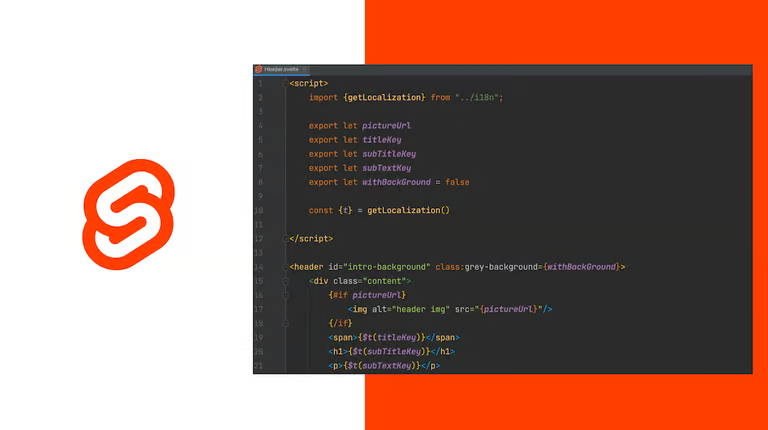
Introduced in 2016, Svelte has been steadily rising in popularity, earning its place among the best front-end tools in 2023. Unlike the common categorizations, Svelte is neither a framework nor a library; it is a compiler. Roughly 10 to 15 percent of front-end developers express satisfaction with Svelte.
At present, over 3,000 websites and applications have been crafted using Svelte, including notable names like The New York Times, 1Password, Philips BlueHive, Chess, Absolute Web, Godday, Cashfree, Rakuten, HealthTree, and Razorpay.
Written in TypeScript, Svelte is an open-source, component-based JavaScript tool that stands out for its lightweight architecture and swift performance, allowing developers to complete web projects with far less coding than other front-end tools demand.
Svelte diverges from the usual front-end options as it lacks a DOM and encourages modularity in coding. This approach allows developers to directly access variables from the markup, facilitating navigation during development. Svelte applies principles of modularity to group components, effectively isolating the logic, template, and view.
One of Svelte's defining characteristics is its promise of boilerplate-free coding. Developers initially create components in HTML, CSS, and JavaScript, and the compiler then transforms the code into a compact, standalone module in vanilla JavaScript at the build step. This module is meticulously integrated into the DOM whenever a state change occurs. This unique method eliminates the need for high processing power in your browser and the overhead of building a virtual DOM, making Svelte faster and more resource-efficient compared to frameworks like React and Vue.
Advantages
One of the fastest tools with quick reactivity Minimal coding required Component-based architecture Lightweight and straightforward Able to run existing JS libraries SEO-optimized No requirement for a virtual DOM
Limitations
Limited ecosystem and tooling Relatively immature community Lack of comprehensive supporting materials Uncertain scalability and coding nuances
Application
Given its simple syntax and minimal processing requirements, Svelte is ideal for beginner front-end developers and smaller applications. However, for larger applications, Svelte's lack of robust tooling, a mature plugin pool, and a solid community might prove challenging. If you're currently using React or Vue, switching to Svelte may not significantly enhance your web development project.
JQuery: The Resilient Veteran of Front-end Development
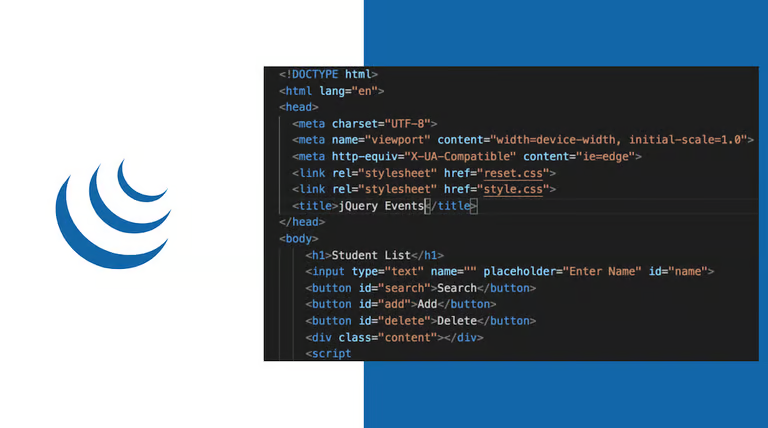
JQuery, one of the oldest open-source JavaScript front-end tools on the market, has proven its resiliency, still standing among the best in 2023 by offering modern development capabilities. Designed to reduce the tedious aspects of JavaScript coding, JQuery provides simplicity and robust support from a vast community. The framework has powered numerous large-scale projects, including Twitter, Microsoft, Uber, Kickstarter, Pandora, and SurveyMonkey.
The power of JQuery lies in its simplicity and versatility in handling events. Even a simple mouse click can be reduced to small snippets of code that are easy to manage and can be integrated anywhere within the JavaScript logic of your applications.
While JQuery was not initially created for building mobile applications, its latest iteration - JQuery Mobile - now empowers developers to do just that. Furthermore, JQuery excels in handling browser interchangeability, thus eliminating cross-browser issues for front-end developers.
Advantages
Friendly to beginners Convenient to work with Abundant with plugins Compatible with popular browsers Strong community support Multiple tools for DOM manipulations SEO-optimized
Limitations
Large in size Potential for slightly slower application speeds Gradually losing relevance with the advent of more functional browsers Lacks a data layer
Application
JQuery proves ideal for creating desktop-based JavaScript applications. With optimized code logic, cross-browser support, and a simplified approach to dynamic content, it allows front-end developers to deliver impeccable website interactivity and searchability.
However, JQuery lacks a data layer, unlike many modern frameworks, meaning that direct DOM access and manipulation are required each time. Consequently, if you're working with a complex user interface, it may be more effective to opt for a modern framework instead of JQuery, as the latter may lead to bloated code and reduced performance.
Ember: The Comprehensive Workhorse of Front-end Development

Ember, an open-source JavaScript web framework following the Model-View-ViewModel (MVVM) design paradigm, was introduced in 2011 and has since earned a significant reputation among developers. Nearly 14% of developers have used this robust framework, which has powered the development of over 30,000 websites, including those of Tinder, Netflix, Apple Music, Chipotle, Nordstrom, Yahoo, Blue Apron, LinkedIn, Vine, and PlayStation Now.
Renowned as one of the fastest front-end frameworks for server-side rendering, Ember also supports two-way data binding, ensuring real-time synchronization between the view and model. It boasts a vast ecosystem with advanced templates designed to expedite the coding process. While Ember provides a wealth of powerful features from day one, its community offers countless plugins for any additional needs.
Ember's community is regarded as one of the most dedicated and active. However, the Ember framework might seem less flexible due to its strict and specific workflows, which developers must adhere to.
Advantages
Superior server-side rendering Built-in testing and debugging tools Consistent, thorough documentation Widget-based approach to components URL-focused design approach Two-way data binding Dedicated community support Supports both JavaScript and TypeScript
Limitations
Not particularly beginner-friendly Not ideal for small-scale projects Relatively large in size Limited capabilities for component reusability Little to no customization options
Application
Ember's component architecture makes it an ideal framework for developing complex, feature-rich single-page web applications for both client-side and mobile applications. However, it's worth noting that its size and complexity may make it an overkill for smaller projects. Additionally, Ember's predefined features may restrict developers, making it less suitable when a high level of professional customization is required.
Backbone: The Lightweight Veteran of Front-end Development
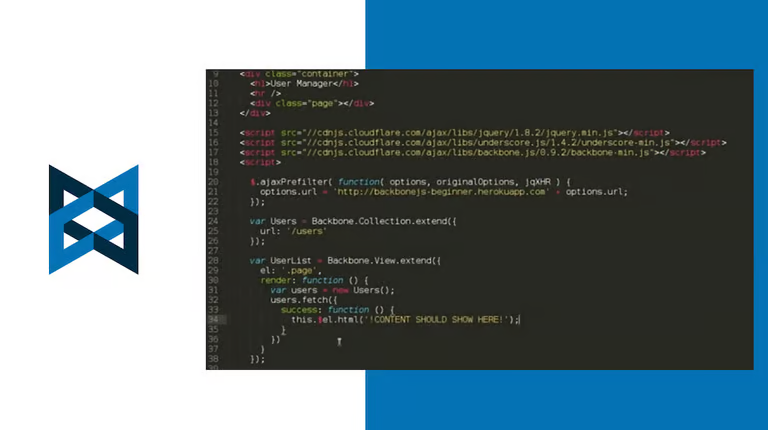
Backbone is a free, open-source JavaScript library that was initially crafted by Jeremy Ashkenas in 2011. Approximately 7% of developers have reported a positive experience with Backbone, which has powered the design of 600,000 websites, including prominent ones like Trello, Tumblr, Pinterest, Uber, and Reddit.
Adhering to the MVC/MVP development paradigm, Backbone represents your data as models, allowing for them to be created, validated, removed, and saved to the server. Whenever a specific user interface action causes a change to a model attribute, the model triggers a 'change' event. This change is then communicated to all views reflecting the model's state, prompting them to re-render with the updated data.
In Backbone, when the model is modified, these changes are automatically reflected in the view, eliminating the need to manually update the HTML or write specific code to search the DOM for elements with certain IDs. Backbone offers a robust API of enumerable functions to build client-side web applications, provides declarative event handling for views, and effortlessly interfaces with your existing API via a JSON interface.
Advantages
Over 100 available extensions User-friendly and easy to learn for beginners Compact size Reduces HTTP requests Well-structured tutorials Stores data in models rather than in the DOM
Limitations
Absence of two-way data binding Occasionally unclear architecture Slowly becoming obsolete Requires more code to be written
Application
Backbone shines when used to design single-page, small, and straightforward web pages. However, its utility isn't limited to smaller applications—it can also be utilized for larger projects, given its ability to separate application logic from the user interface, thereby averting the spaghetti code model and promoting a better design with less coding. Despite its dwindling popularity, Backbone continues to be a flexible, powerful tool that seasoned front-end developers appreciate.
Semantic UI: A Human-friendly Framework for Elegant UI Design
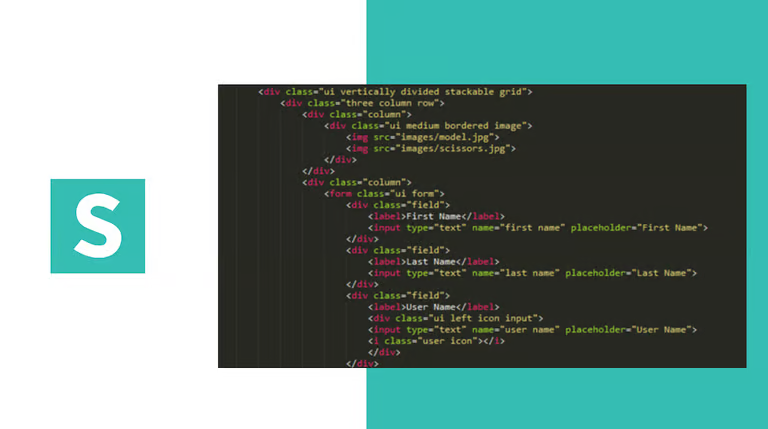
Semantic UI, powered by LESS and JQuery, is a relative newcomer to the front-end framework landscape. Introduced in 2014, this CSS framework uses organic language syntax in its design and has quickly climbed the ranks to become one of the top JavaScript frameworks on GitHub. High-profile platforms like Snapchat, Accenture, Digital Services, Ovrsea, and Kmong are notable users of Semantic UI.
Despite having a smaller community compared to other established frameworks, the support base for Semantic UI is exceptionally active and loyal. This dedicated community has contributed thousands of themes, numerous UI components, and made a multitude of commits on GitHub.
The primary objective of Semantic UI is to offer human-friendly HTML. Its classes adopt syntax from human languages, facilitating organic noun/modifier relationships, word order, and intuitiveness, which in turn enables developers to connect concepts naturally. The UI design approach of the framework is sleek, flat, and fluid. Moreover, Semantic facilitates theme and CSS configuration, JavaScript, font files, and an inheritance system that allows for code-sharing across different applications.
Advantages
Wide array of rich and responsive UI components Self-explanatory organic code Large selection of themes Effortless integration with Angular, React, Meteor, and Ember
Limitations
Relatively small community May pose a steep learning curve for beginners Infrequent updates Requires expertise in developing custom configurations
Application
Semantic UI is an ideal tool for UI designers looking to create elegant user interfaces. However, it might pose a challenge for inexperienced developers or UI designers due to its requirement for custom configurations. Therefore, this framework is best suited for seasoned developers comfortable with creating customizations in applications beyond the provided functions. As such, Semantic UI might not be the first choice for beginners venturing into front-end development.
Wrapping Up: The Landscape of Front-End Frameworks in 2023
Selecting the best front-end framework from the ones discussed here, or from the myriad of others available in 2023, is not a straightforward task. Each framework offers its own unique advantages and potential limitations. Moreover, these frameworks are regularly updated with new features, further complicating the comparison and selection process.
There is an array of exceptional frameworks in the marketplace, each boasting its own set of capabilities and specialties. While we were able to cover several key frameworks in this article, it's worth noting that there are still many others that we were not able to include.
Ultimately, the best front-end framework for you will depend on your specific requirements, project scope, team size, and level of expertise. So, take time to explore and understand what each framework has to offer before making your final decision. Remember, the best tool is often the one that works most effectively for your unique needs and circumstances.
Related Posts
